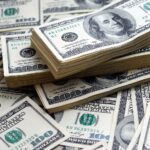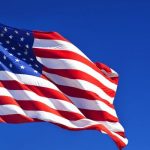Last Updated on March 24, 2025 by admin
The Federal Reserve System, often referred to as the Fed, was established on December 23, 1913, as a response to a series of financial panics, most notably the panic of 1907.
The Federal Reserve Act, signed into law by President Woodrow Wilson, aimed to create a more stable and flexible monetary and financial system. The structure of the Fed, consisting of 12 regional Federal Reserve Banks and a central Board of Governors, was designed to balance public oversight with private sector involvement, preventing the concentration of power in Wall Street or Washington.
Initially, the Federal Reserve was tasked with providing an elastic currency, supervising banks, and conducting monetary policy to maximize employment and stabilize prices. Over the years, its roles have expanded significantly, particularly in response to major economic events such as the Great Depression and the Great Recession.
The Fed’s responsibilities now include regulating banks, maintaining financial stability, and providing financial services. Its evolution has been marked by key legislative changes, such as the Banking Acts of 1933 and 1935, which shifted power from regional Reserve Banks to the Board of Governors
The Board of Governors is the main governing body of the Federal Reserve System. It consists of seven members appointed by the President of the United States and confirmed by the Senate. The Chairman of the Board is also appointed by the President and serves as the public face of the Federal Reserve.
The twelve regional Federal Reserve Banks are located in major cities across the United States, and they serve as the operational arms of the Federal Reserve System. These banks are responsible for implementing monetary policy, regulating banks within their districts, and providing financial services to depository institutions and the U.S. government.
The Federal Open Market Committee (FOMC) is the policy-making body of the Federal Reserve System. It is composed of the seven members of the Board of Governors and five of the twelve regional Federal Reserve Bank presidents. The FOMC is responsible for setting monetary policy, including decisions on interest rates and the purchase or sale of government securities.
Over the years, the Federal Reserve System has played a crucial role in shaping the U.S. economy. It has the power to control the money supply, influence interest rates, and regulate the financial system. It acts as a lender of last resort during times of financial crisis and provides stability to the banking system.
However, the Federal Reserve System has also been subject to criticism and controversy. Some argue that it has too much power and lacks transparency and accountability. There have been debates about its role in causing or exacerbating economic recessions and whether it should have more or less independence from political influence.
Overall, the United States Central Bank, the Federal Reserve System, has been an integral part of the U.S. financial system for over a century. It continues to evolve and adapt to meet the challenges of an ever-changing economic landscape.
You can also read:List of Banks in United states of America,Banks in USA
The role of the Federal Reserve
The Federal Reserve, commonly known as the Fed, serves as the central bank of the United States and plays a crucial role in maintaining the nation’s economic stability and financial health.
Its primary responsibilities include conducting monetary policy to achieve maximum employment and stable prices, supervising and regulating banks to ensure the safety and soundness of the financial system, and maintaining financial stability by minimizing systemic risks. Additionally, the Fed provides financial services such as check clearing and payment processing, and fosters consumer protection and community development.
One of the key tools the Federal Reserve uses to influence the economy is the federal funds rate, which is the interest rate at which banks lend to each other overnight. By adjusting this rate, the Fed can affect the cost of borrowing across the economy.
Lowering the federal funds rate makes borrowing cheaper, encouraging spending by households and businesses, which can increase demand for goods and services, potentially leading to higher employment and inflation. Conversely, raising the federal funds rate can help control inflation by making borrowing more expensive, thus slowing down economic activity
The Power of the Reserve Banks:
The Reserve Banks in the United States serve as the operational arms of the Federal Reserve System, playing a pivotal role in the nation’s financial stability and economic policy. They are responsible for conducting monetary policy, promoting financial stability, regulating financial institutions, and supporting payment systems.
Additionally, they foster consumer protection and community development, providing essential services to banks and the U.S. Treasury, supervising commercial banks, and conducting economic research.
One of the primary ways Reserve Banks influence monetary policy is through the adjustment of interest rates, particularly the federal funds rate. By lowering interest rates, they make borrowing cheaper, which encourages spending by households and businesses, thereby increasing demand for goods and services.
This can lead to higher employment and potentially higher inflation. Conversely, when demand is too strong, they can raise interest rates to cool down the economy and keep inflation in check. Their actions aim to stabilize the economy by managing the balance between inflation and employment
In 2025, the operations of Reserve Banks have undergone several changes, including price increases for various services such as Check Services, FedACH Services, FedLine Solutions, Fedwire Funds Service, and National Settlement Service. Some services, like Accounting Services and FedCash Services, have unchanged pricing.
Enhancements include new risk management features for the FedNow Service and the adoption of ISO 20022 for the Fedwire Funds Service. These changes reflect the Reserve Banks’ ongoing efforts to improve efficiency and security in their operations.
ALSO READ: List of Best Banks in California
Controversies and Criticisms:
The Federal Reserve System, since its inception in 1913, has been a focal point of economic debate and controversy. Critics argue that the Fed has not effectively managed inflation or stabilized the economy, with some attributing major economic downturns, such as the Great Depression and the 2007-2008 financial crisis, to its policies.
The Fed’s role in fractional reserve banking and its influence over interest rates and money supply have been contentious, with accusations of exacerbating boom-bust cycles and creating economic instability
One of the most significant criticisms of the Federal Reserve is its perceived lack of transparency and accountability. Critics argue that the Fed operates with too much unchecked power and is overly influenced by private banking interests.
This has led to calls for increased oversight and even the abolition of the Fed by figures like Ron Paul and Milton Friedman. The Fed’s interventions during financial crises, such as the 2008 bailouts, have also been criticized for creating moral hazard and disproportionately benefiting the financial sector
The implementation of quantitative easing (QE) after the 2008 financial crisis remains a contentious issue. While some economists argue that QE helped stabilize the economy, others believe it contributed to a slow recovery and potential inflationary pressures.
The Fed’s monetary policy, particularly its tendency to maintain low interest rates, has been accused of fueling asset bubbles and increasing wealth inequality. These policies have sparked debates about the Fed’s role in managing inflation and economic cycles, with ongoing discussions about its effectiveness and transparency.
Conclusion:
The Fed has played a crucial role in shaping the United States’ financial landscape. While debates and criticisms continue to surround its existence, its significance cannot be overstated. The Federal Reserve System persists as a cornerstone of the US economy, ensuring stability amidst the unpredictable twists and turns of the modern financial world.
















